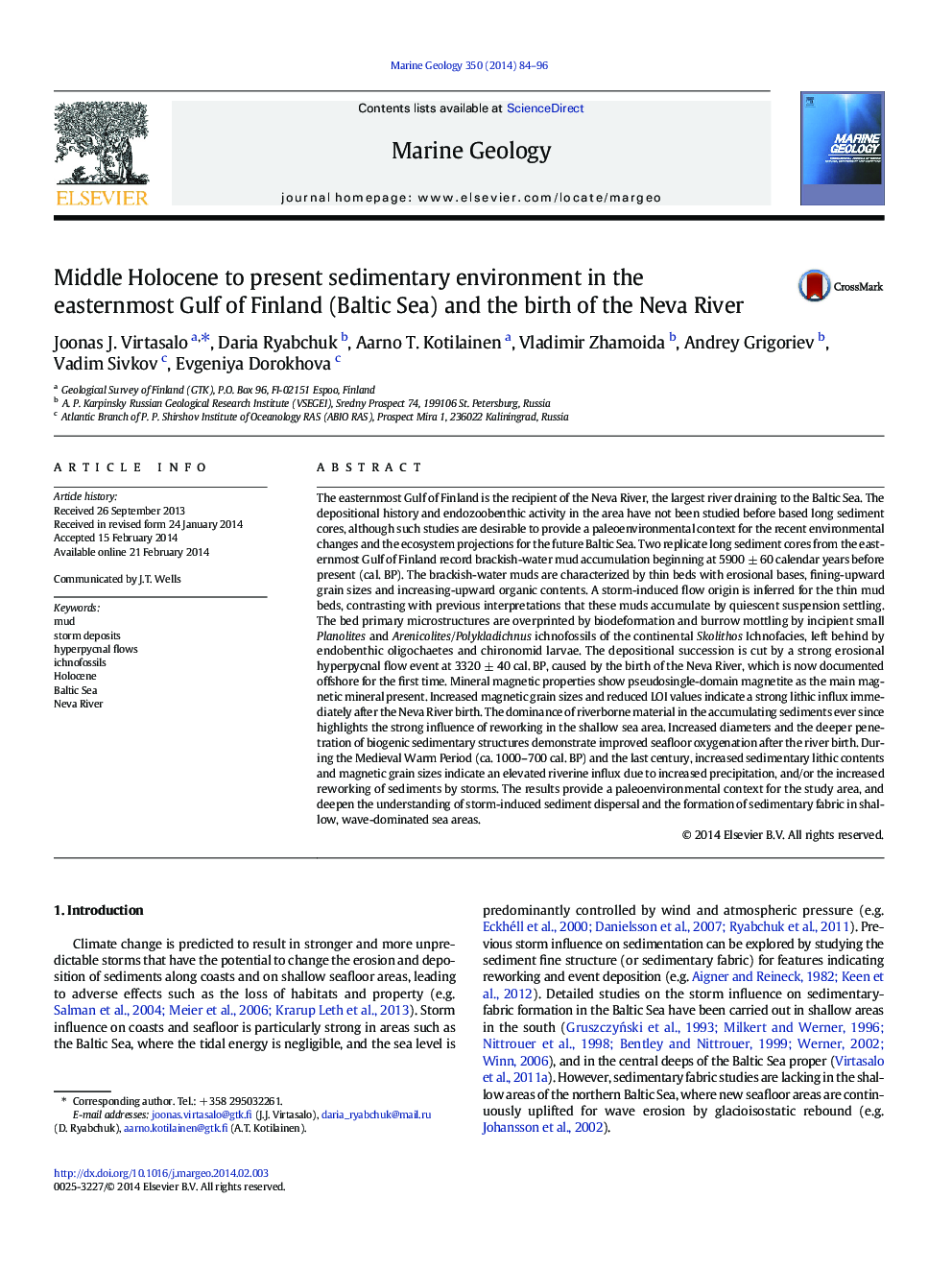| کد مقاله | کد نشریه | سال انتشار | مقاله انگلیسی | نسخه تمام متن |
|---|---|---|---|---|
| 4718330 | 1639102 | 2014 | 13 صفحه PDF | دانلود رایگان |
• Sedimentary environment of the easternmost Gulf of Finland during the past 6000 yrs.
• Thin mud beds record episodic erosion and deposition by storm-induced flows.
• The Neva River was born 3320 ±40 calendar years before present.
• The Neva River birth led to improved seafloor oxygenation and zoobenthic community.
• Elevated lithic deposition by runoff/storms during medieval and modern warm periods.
The easternmost Gulf of Finland is the recipient of the Neva River, the largest river draining to the Baltic Sea. The depositional history and endozoobenthic activity in the area have not been studied before based long sediment cores, although such studies are desirable to provide a paleoenvironmental context for the recent environmental changes and the ecosystem projections for the future Baltic Sea. Two replicate long sediment cores from the easternmost Gulf of Finland record brackish-water mud accumulation beginning at 5900 ± 60 calendar years before present (cal. BP). The brackish-water muds are characterized by thin beds with erosional bases, fining-upward grain sizes and increasing-upward organic contents. A storm-induced flow origin is inferred for the thin mud beds, contrasting with previous interpretations that these muds accumulate by quiescent suspension settling. The bed primary microstructures are overprinted by biodeformation and burrow mottling by incipient small Planolites and Arenicolites/Polykladichnus ichnofossils of the continental Skolithos Ichnofacies, left behind by endobenthic oligochaetes and chironomid larvae. The depositional succession is cut by a strong erosional hyperpycnal flow event at 3320 ± 40 cal. BP, caused by the birth of the Neva River, which is now documented offshore for the first time. Mineral magnetic properties show pseudosingle-domain magnetite as the main magnetic mineral present. Increased magnetic grain sizes and reduced LOI values indicate a strong lithic influx immediately after the Neva River birth. The dominance of riverborne material in the accumulating sediments ever since highlights the strong influence of reworking in the shallow sea area. Increased diameters and the deeper penetration of biogenic sedimentary structures demonstrate improved seafloor oxygenation after the river birth. During the Medieval Warm Period (ca. 1000–700 cal. BP) and the last century, increased sedimentary lithic contents and magnetic grain sizes indicate an elevated riverine influx due to increased precipitation, and/or the increased reworking of sediments by storms. The results provide a paleoenvironmental context for the study area, and deepen the understanding of storm-induced sediment dispersal and the formation of sedimentary fabric in shallow, wave-dominated sea areas.
Journal: Marine Geology - Volume 350, 1 April 2014, Pages 84–96
